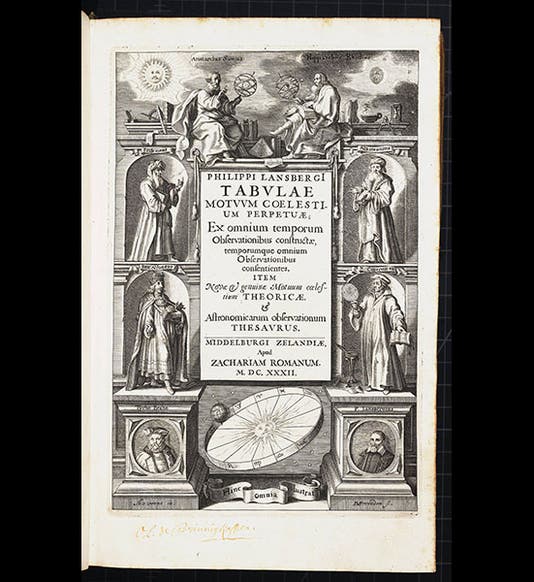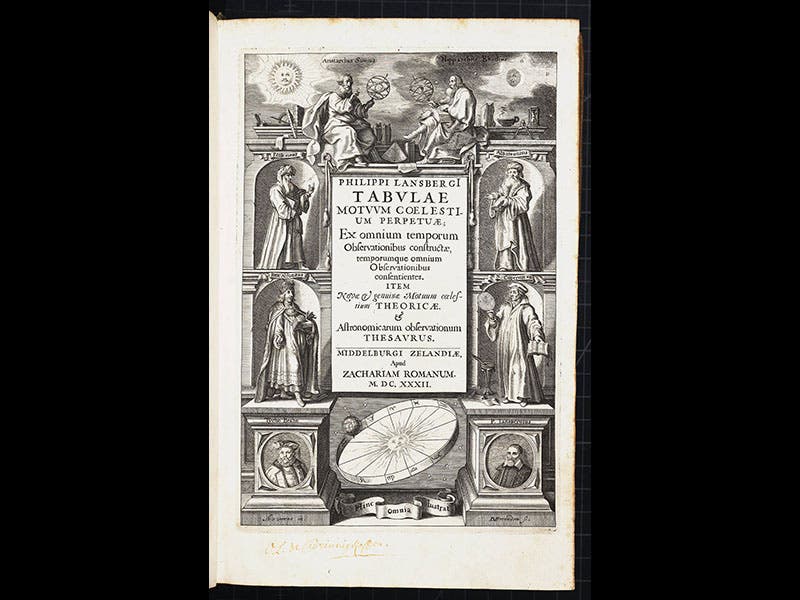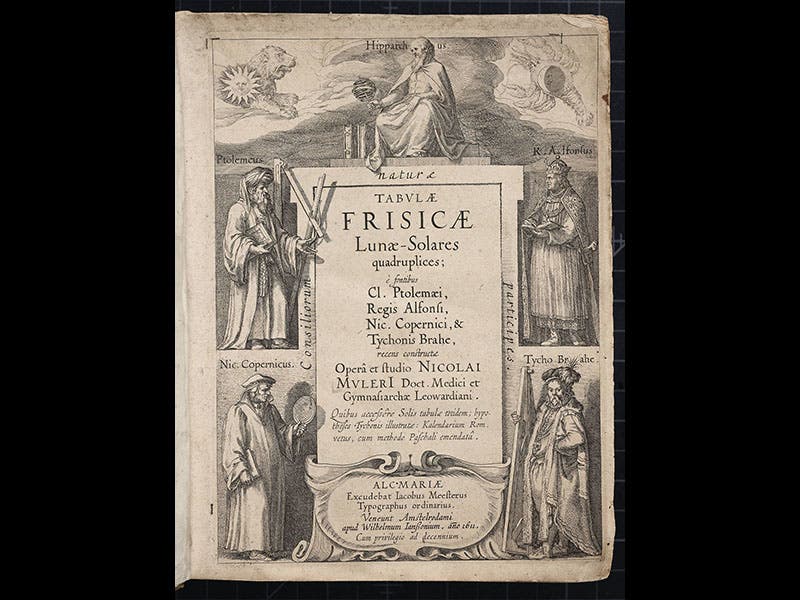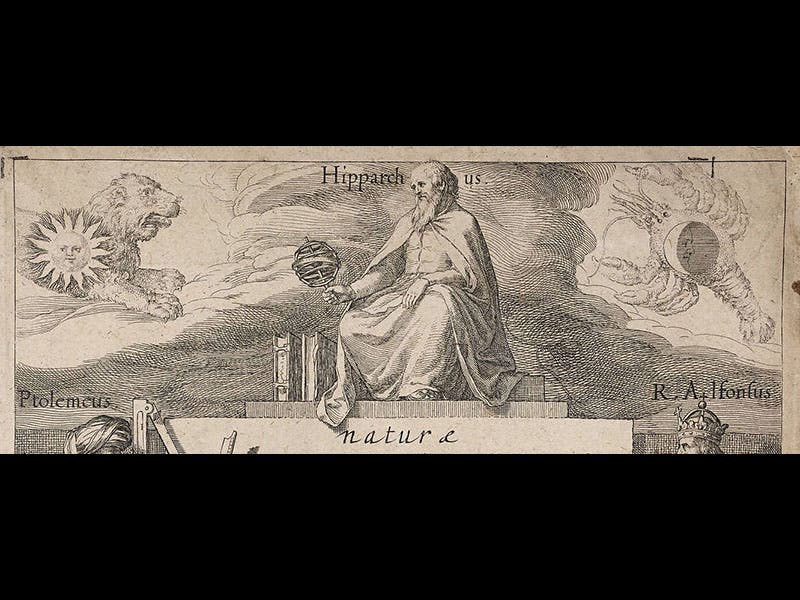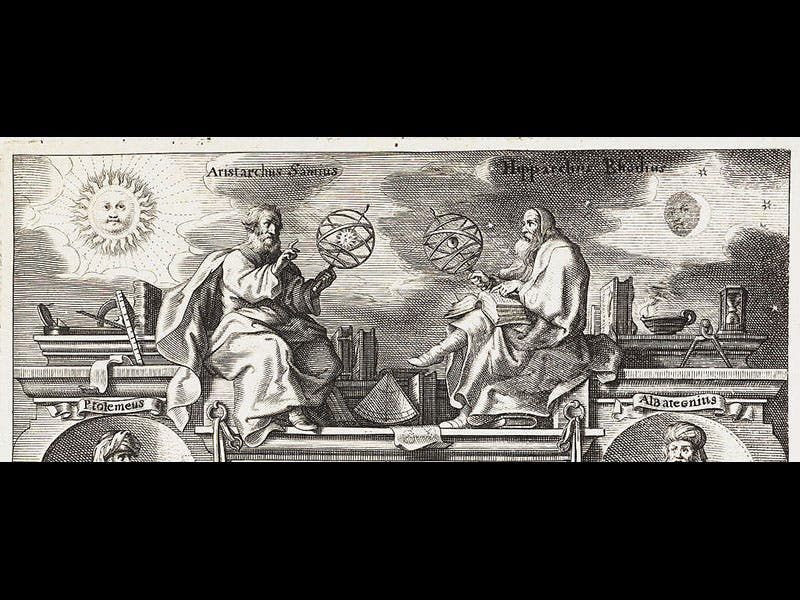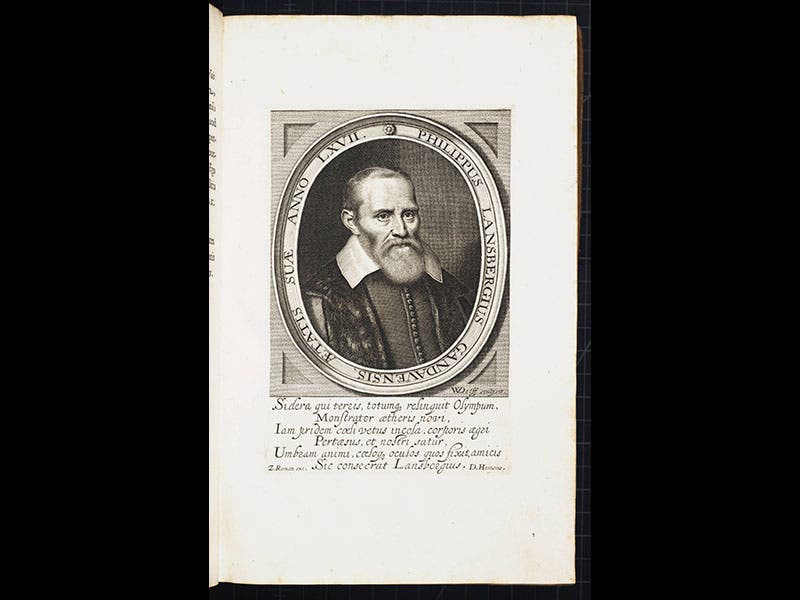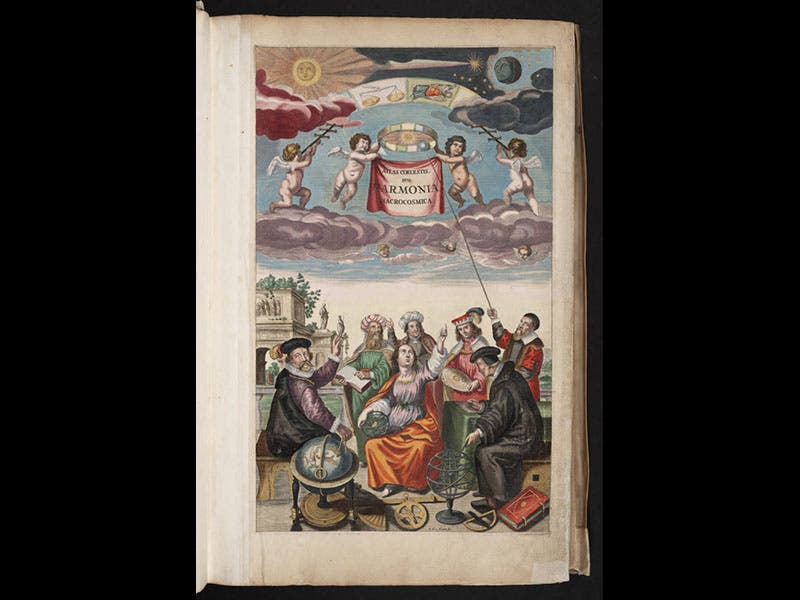Scientist of the Day - Philippe van Lansberge
Philippe van Lansberge, a Dutch astronomer, was born Aug. 25, 1561. Lansberge was one of the first Copernicans in the Netherlands, meaning he supported the idea of a sun-centered planetary system. In 1632, the year of his death, he published a massive set of astronomical tables, and the book opened with a splendid engraved title page (first image). Like many such title pages, it was a spin-off from an earlier title page, that in the Frisian Tables (1611) of Nicolaus Mulerius (second image). Mulerius in his title engraving paid homage to the most important of his predecessors in compiling astronomical tables, including Ptolemy, Alfonso X, Tycho Brahe, and even Copernicus, who is being honored here for his practical astronomy, rather than his novel cosmology. And there at top center sits the father of geocentric astronomy, the ancient Greek Hipparchus, holding an earth-centered armillary sphere (third image).
When we return to Lansberge's title-page (first image), we see that he has literally turned the tables on Mulerius. At the bottom is an emblem, invented just for this purpose, with the sun at the center and the earth in orbit, and the motto, hinc omnia lustrat—thus it illuminates all things. But the cleverest feature is at the top (fourth image), where Hipparchus has been pushed to the side by a newcomer, the ancient heliocentrist Aristarchus, who brandishes a sun-centered armillary and shakes his finger at poor Hipparchus, who looks considerably taken aback.
There is a frontispiece portrait of Lansberge in his Tables (fifth image), which is fortunate, for it allows us to identify him in a later emblematic tableaux. On the frontispiece of Andreas Cellarius's Harmonia macrocosmica (1661), a bevy of astronomers gather in a group to discuss cosmology, and almost all of them are pointing up (sixth image). One of them has the advantage in the pointing department, holding a real pointer. This is Lansberge, as we can tell by his visage. And what is he pointing to? The object of everyone’s attention is the heliocentric emblem that first appeared on Lansberge’s 1632 title page. Sun, Sun, Sun, here it comes.
Dr. William B. Ashworth, Jr., Consultant for the History of Science, Linda Hall Library and Associate Professor, Department of History, University of Missouri-Kansas City. Comments or corrections are welcome; please direct to ashworthw@umkc.edu.

